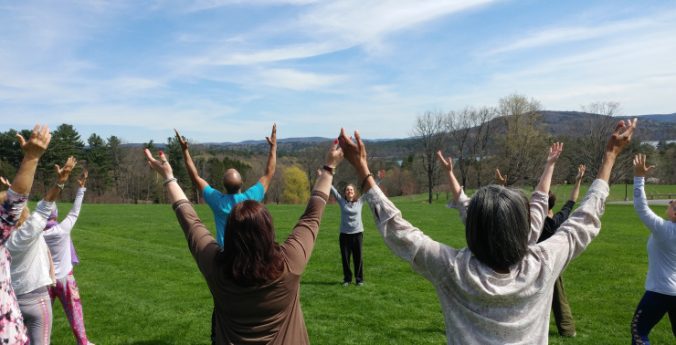Almost 23,000 years ago the Chinese medicine system was developed as a way of preventing and healing disease and has changed very little through the centuries. To this day, it’s one of the world’s oldest medical systems that is still being used.
But, what makes this ancient way of healing so different from other healing methods? Traditional Chinese medicine proposes that restoring a person’s female energy (yin) and male energy (yang) will create harmony in the body and prevent disease, explained IEP. Explore these five ancient Chinese traditional healing methods still in practice today.
Acupuncture
Acupuncture stems from the Chinese philosophy of balancing yin and yang forces, according to the University of Minnesota, overpower any imbalances and restore overall health. This ancient Chinese medical technique has been used for many years to relieve pain, cure disease, and improve overall health.
At the core of Chinese medicine is Qi, (pronounced chee) translated as life force energy. Qi flows freely through 12 pathways of the body, all of which are associated with major visceral organs in the body. If an imbalance appears with either one of these, a person’s QI will be disrupted and will show up in the form of disease or illness.
Acupuncturists insert tiny needles into these pathways as a way of distributing yin and yang energy evenly through these channels to encourage free flowy Qi. Research suggests that people gain overall health and rejuvenating vitality after receiving acupuncture treatments.
Tai Chi
Ancient Chinese Medicine looks at active meditation as a form of healing, and many practices are used in today’s Western society as part of modern medicine. According to the Mayo Clinic, Tai Chi explores a series of slow and continuous rhythmic movements that stem from the practice of martial arts. With this practice, each movement focuses on specific postures and the most common classical sequence is known as Tai Chi Chuan — designed to promote overall health and wellbeing.
Herbal Therapy
Chinese medicine strongly believes in the healing properties of particular herbs for the body, according to research published in Drug Discovery and Evaluation. Practitioners use a combination of different herbs to create an overall balance within the body. Depending on the reasoning for treatment, each practitioner will create a unique formula for each person which is made up of a combination of different herbs beneficial for particular illnesses or issues.
Chinese herbology formulas are made up of four separate categories. Ministerial herbs address the principal pattern of the disease, explains Winchester Hospital. Deputy herbs address any coexisting conditions. Assistant herbs may reduce any possible side effects of the first two herbs. Envoy herbs guide the healing therapy to where it needs to go in the body.
Moxibustion
Originating in China, moxibustion (also known as Moxa treatment) consists of burning small cones of dried mugwort leaves on specific areas of the body as a way of increasing blood circulation and relieving pain. According to WebMD, when we have a healthy flow of Qi circulating in the body, we can naturally heal from digestive issues and chronic pain.
Similar to acupuncture, these cones are placed on designated areas to work their magic and also can be used close to large blood vessels, nearby the eyes, and close to the ears; all locations where acupuncture needles may not be safe to insert. These small cones are placed directly onto the body and ignited with heat to release the healing properties from the leaf. As soon as the cones reach a certain heat, the therapist removes them.
Moxibustion treatment was discovered as a way to remove energy blockages that can lead to both mental and physical health problems. It’s used to treat an array of health issues including back pain, arthritis, headaches, and muscle stiffness.
QiGong
QiGong (qi means life force, gong is the exercise of qi) focuses more on flowing freely to create awareness by exploring elements of meditation, relaxation techniques, martial-art movements, and breathwork with the sole purpose of igniting Qi to create overall wellness according to Better Humans. A method of QiGong can be carried out through a massage where the therapist will integrate a relaxing massage with acupuncture on the meridians.

